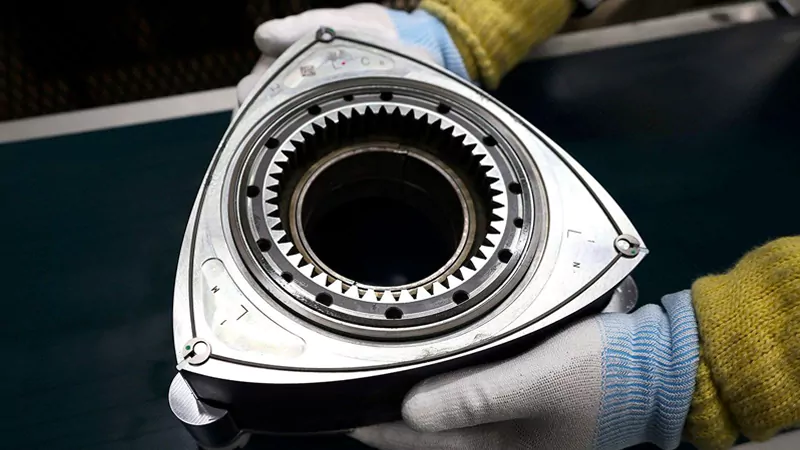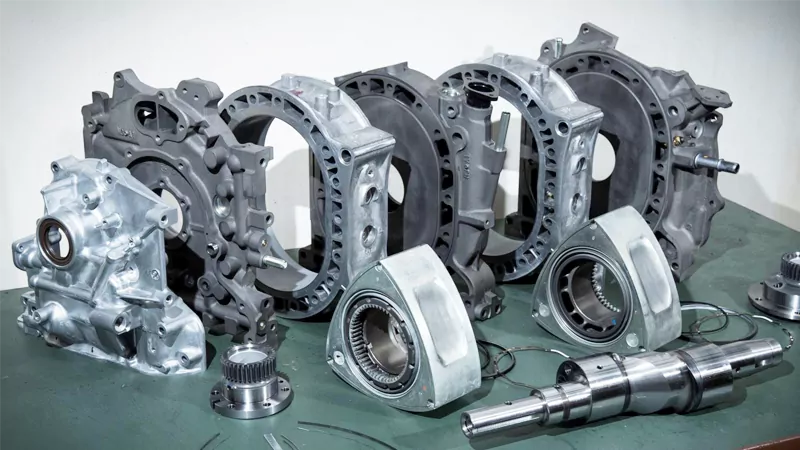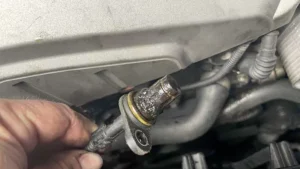The rotary engine, also known as the Wankel engine, has long fascinated engineers and car enthusiasts with its compact size, smooth high-revving nature, and unique design. Instead of pistons moving up and down like in a conventional engine, the rotary uses a triangular rotor spinning within an oval housing to generate power. This design promised fewer moving parts, less vibration, and impressive power relative to size.

Despite its innovation and cult following, the rotary engine never achieved mainstream success. It was last seen in a production car in the Mazda RX-8, which was discontinued in 2012. While Mazda has hinted at a possible comeback with concepts like the RX Vision, the reality is that rotary engines face fundamental disadvantages that have kept them from thriving in the modern automotive industry. Here are four key reasons why the rotary engine effectively died.
1. Low Thermal Efficiency
One of the biggest problems with the rotary engine is its low thermal efficiency. The combustion chamber inside a rotary is long and thin compared to the compact, concentrated chamber in a piston engine. This design makes it harder for the flame to travel efficiently, often leaving pockets of unburned fuel. As a result, a rotary burns fuel less completely, producing less power per unit of gasoline and wasting energy as heat.
This inefficiency not only hurts performance at lower speeds but also leads to poor fuel economy, a serious disadvantage especially during the oil crises of the 1970s and again in today’s era of rising fuel costs and environmental concerns.
2. Rotor Sealing Problems
Another weakness that doomed the Wankel engine is the issue of rotor sealing. At the tips of the triangular rotor are apex seals, which are responsible for keeping the combustion chambers sealed as the rotor spins. Unlike piston engines where combustion is evenly distributed among multiple cylinders, in a rotary engine combustion occurs in just one part of the housing.
This uneven temperature distribution puts enormous stress on the apex seals and surrounding components. Over time, they wear out or fail, leading to loss of compression, reduced performance, hard starting, and costly repairs. While enthusiasts often accept this as part of rotary ownership, the average driver expects an engine to last hundreds of thousands of miles with minimal maintenance. The rotary simply could not compete with the long-term reliability of piston engines.
3. High Oil Consumption
The rotary engine also consumes more oil than a typical piston engine. Oil is injected directly into the combustion chamber to lubricate the rotor and help maintain a seal between the rotor and housing. While this is necessary for the engine to function, it means the engine gradually burns oil during normal operation.
For car buyers accustomed to engines that rarely require topping up between oil changes, this characteristic was seen as a flaw. High oil consumption not only increased running costs but also contributed to higher emissions, further compounding the rotary’s environmental challenges.
4. Emissions and Fuel Economy
Perhaps the most decisive factor in the death of the rotary engine was its inability to meet modern emission standards while still offering competitive fuel economy. Because of incomplete combustion and oil injection, rotaries produce high levels of unburned hydrocarbons. Even Mazda’s most advanced rotary, the Renesis engine in the RX-8, struggled to pass regulatory requirements in Europe and North America.
By contrast, piston engines were evolving rapidly with technologies like direct injection, turbocharging, and hybrid systems. These improvements made piston engines cleaner, more efficient, and more versatile, leaving the rotary behind. Ultimately, poor fuel efficiency and weak emissions performance made it impossible for the rotary to survive in mainstream production cars.

Conclusion
The rotary engine died because of four fundamental flaws: low thermal efficiency, rotor sealing problems, high oil consumption, and poor emissions and fuel economy. These disadvantages outweighed its benefits of compact size and smooth power delivery, especially as global priorities shifted toward efficiency, reliability, and environmental responsibility. While the piston engine adapted and thrived, the rotary became a victim of its own limitations.
Even so, the Wankel engine remains one of the most fascinating chapters in automotive history—a reminder that innovation often comes with both brilliance and fragility.



